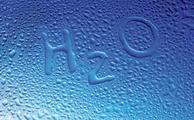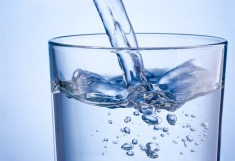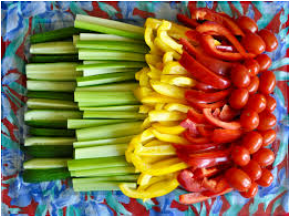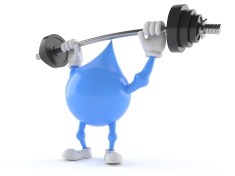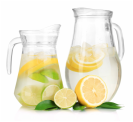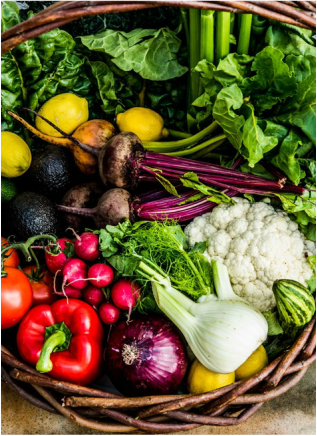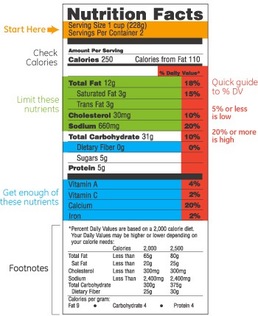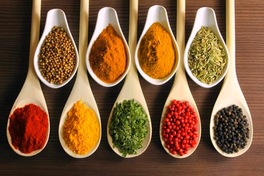What does water do for my body? Water is a nutrient essential to life. It is the primary component of all bodily fluids - blood, lymph, digestive juices, urine, tears, and sweat - and is involved in almost every bodily function. Water makes up 60% of our total body weight and is second in importance only to air for sustaining life. It is impossible to sustain life for more than a week without it. Should I drink only when thirsty? Thirst is not fully reliable. Thirst is a signal that your body is already on its way to dehydration. It is important to drink more than thirst demands and continue to drink throughout the day .
Dehydration Without enough water, we literally dry ourselves out. Dehydration is linked to chronic health problems like arthritis, diabetes, colitis, high blood pressure, kidney stones, and multiple sclerosis. Dehydration symptoms
How much water do we really need? Water requirements vary greatly from person to person and depend on the climate in which we live, our activity level, and our diet. Water goals Divide your body weight (in pounds) by 2. Aim to drink that many ounces of water daily. If you weigh 160 pounds/2 = 80 = ounces of water needed daily. Add 8 ounces for every half-hour of exercise. Don't think you can reach these goals? Of course you can! Here are some tips for reaching daily water goals:
Sources:
American Council on Exercise. (ACE). (2008). Fit facts: Healthy hydration. Retrieved from: http://bit.ly/1jScu31 Family Doctor. (2011). Hydration: Why it’s so important. Retrieved from: http://bit.ly/1i12PLi Haas, E. (2005). Staying healthy with nutrition. Berkeley, CA: Celestial Arts. Healthy Living for Life. (2011). Water education. Retrieved from: http://bit.ly/1lDcd5f
0 Comments
Navigating a grocery store can be intimidating at times, but don’t get overwhelmed. Use this guide to help you put the healthiest foods into your cart and onto your table. Plan ahead Before you start a journey, you need to have a plan. Planning helps you create balanced meals and saves time. Plan your weekly meals and snacks and write a list before venturing out to the store. Once at the store, stick to your list and avoid all of the marketing ploys throughout the store, such as end-of-aisle displays and “buy one get one free” promotions. You will save time, money, and leave with a cart full of healthy options.
Great. So, what are the best choices in each section of the grocery store? Produce - Choose seasonal and organic fruits and veggies when possible. Opt for a rainbow of colors in your produce to maximize your nutrient intake. Meat/Poultry - Choose organic, grass-fed meat and poultry. Dairy - Choose grass-fed and full-fat versions of dairy that are antibiotic and hormone free. Eggs - Pasture-raised, local eggs are best, but cage-free, organic is also a good option. Seafood - Wild fish is best. Farm raised is not recommended. Fats - Avocados; olives; grass-fed, organic butter; bacon fat from grass-fed pork; ghee Oils - Organic, cold-pressed olive oil; organic, raw coconut oil
Canned & jarred: capers, coconut milk, coconut water, olives, pickles, pumpkin, wild salmon, sardines, tahini, tomato sauce, tomato paste Nuts & seeds: (keep cold - I store mine in the refrigerator) almonds, Brazil nuts, cashews, hazelnuts, macadamia, pecans, pine nuts, pistachios, pumpkin seeds, sesame seeds, walnuts Beverages: water (can flavor with lemon, mint, or cucumber), herbal tea, green tea Sweets: cocoa powder, coconut, dates, honey, maple syrup (grade B), dark chocolate Source: Sanfilippo, D. (2012). Practical paleo. Las Vegas: Victory Belt Publishing. |
The information on this website is not intended to diagnose, treat, prevent, or cure any disease.
All of the information on this website is Copyright © CookingwithKristin.com 2017 and may not be downloaded, reproduced, republished or otherwise copied without express written permission of CookingwithKristin.com.
All of the information on this website is Copyright © CookingwithKristin.com 2017 and may not be downloaded, reproduced, republished or otherwise copied without express written permission of CookingwithKristin.com.
